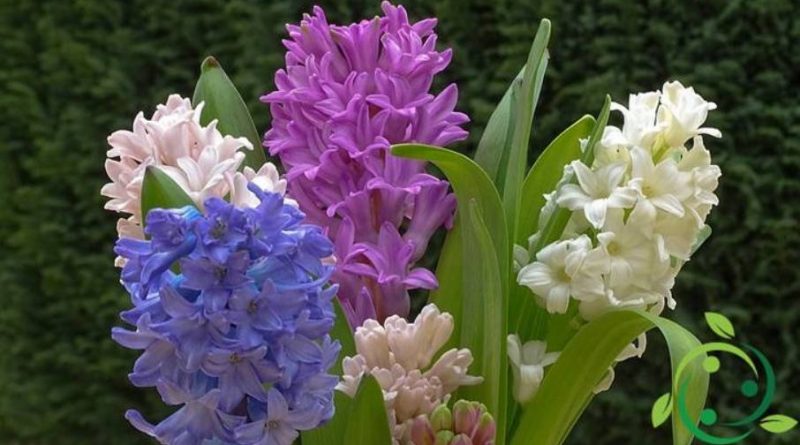How to cultivate Hyacinth
How to cultivate Hyacinth
Hyacinth is a plant belonging to the genus Hyacinthus and to the family of Liliaceae; this genus of plants is native to the Eastern Mediterranean, Asia Minor and African tropical regions. In this card we will see how to cultivate the Hyacinth following the most appropriate agronomic tricks.
Hyacinths are bulbous plants that bloom only once a year in the spring period; if cultivated inside the apartments, in a warm place, the hyacinth blooms as early as the end of January.
Within the genus Hyacinthus there are numerous varieties with rich colorful and perfumed inflorescences; the bulb is rounded, tunicate, which produces few bulbetti; among the cultivated and partly wild species we recall the Hyacinthus orientalis L. with ribbon-like leaves with flowers gathered in a single raceme, with various colors ranging from cerulean, deep blue, to white, rosy or yellow.
The genus Hyacinthus includes the following species:
– Hyacinthus litwinovii Czerniak.
– Hyacinthus orientalis L.
– Hyacinthus transcaspicus Litv.
The botanical classification is accompanied by a classification that, in floriculture, for practical reasons, distinguishes hyacinths in different groups:
– Roman hyacinth: with the bulb covered by a white film, it has two to three stems per bulb, with small linear leaves and bell-shaped white-greenish flowers, very fragrant, early, lends itself to forcing;
– Italian hyacinth: with white, lilac or purple flower cultivars, and with the bulb covered by a violet, semi-late film;
– Dutch hyacinth: hybrids derived from Hyacinthus orientalis with large flowers densely gathered in an inflorescence, simple or double, of various colors, late.
For the hyacinth cultivation technique it is advisable to choose sunny places, even if the plant grows well even in semi-shaded areas with minimum temperatures not lower than 15 ° C. It fears wind and frost. However, to have more abundant and colorful blooms it is advisable to place the hyacinths in brighter places.
The preferred soil is fertile, light and with excellent drainage; in general an ideal substrate consists of a mixture of peat and 50% sand. Moreover in this type of substrate even the bulbs find a way to develop better and to form the relative bulbils.
After the burial, the bulbs must be covered with soil and protected from the cold with a light mulch composed of dry leaves and peat that must be removed with the first spring warmth.
As far as water supplies are concerned, it is advisable, on average to irrigate every three days in winter (in pots) and once or twice a day in summer and every other day during the spring. In the open field, winter irrigation is obviously suspended.
For the fertilization in pots it is necessary to intervene once a month with slow-release fertilizer specific for bulbous plants to favor the flowering and the bulbs enlargement. The fertilizer must contain phosphorus, nitrogen and potassium, macro elements necessary both for the development of the leaves and for that of the flowers. In autumn, the bulbs left behind can be treated with a small dose of pelleted manure.
In garden cultivation it is advisable to intervene with mature manure before planting the bulbs, mixed in the soil, and with larger doses in the holes where the bulbs are placed.
For hyacinths grown at home, you need to choose places that are bright but far from radiators. Every year the bulbs are repotted in containers of a few centimeters larger than the previous one and always using the new soil mixed with a part of coarse sand to favor the drainage of the water of the waterings. At the bottom of the pot some draining material can be placed such as very large gravel or perlite.
The reproduction of hyacinth occurs in the autumn period, directly due to the division of the cloves that form at the base of the mother bulb.
The bulbils are left to grow on the main or mother bulb until they are ripe enough to be divided. Every single hyacinth bulb can produce a certain number of plants within 3-5 years of life.
Once the cloves are separated from the mother bulb, they are buried in the ground during the autumn (between September and November) at a depth of about 15 cm. The distance between one bulb and another must be about 15 cm if planted in the ground, 10 cm instead, for those raised in planters or pots.
An important warning is to handle bulbs and bulbils only with gloves as they are highly toxic even by contact only.
For the conservation of the bulbs must wait for the end of flowering; at this point you will have to start to thin out the waterings and wait for the leaves to turn yellow and become completely dry. At this point you can proceed to the removal of the bulbs that must be dried for a few days in the air. Root-cleaned bulbs and any dried leaves should be placed in a container with peat or sawdust and stored in a dark and dry place until the next plant.

